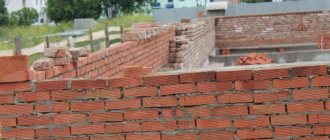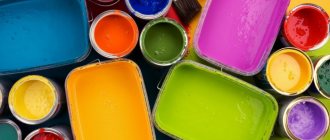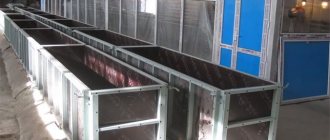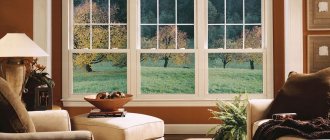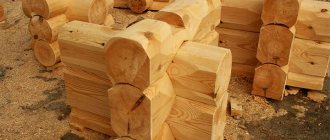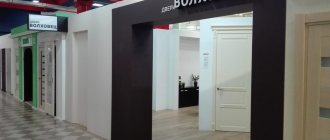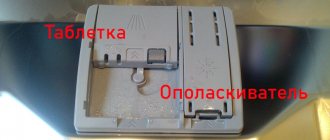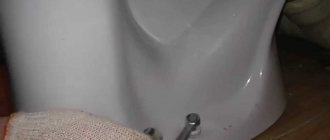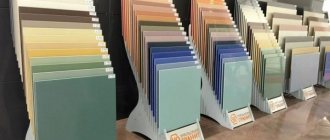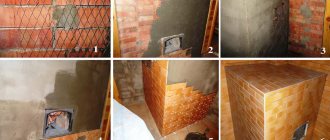When choosing wallpaper, first of all pay attention to the base, since the performance characteristics of the material depend on it. Therefore, before choosing a coating, you should familiarize yourself with what types of wallpaper are available and what the features of a particular material are. This article is dedicated to this topic.
Wallpaper on paper basis
How to choose the right wallpaper?
When creating the interior of an apartment, everyone has to decide the issue of wall decoration.
They are the ones who set the tone for the entire room. Although an incredible number of finishing methods are now available, the most popular solution for apartments remains the familiar and understandable wallpaper. But their choice requires a thoughtful approach not only to price, but also to the quality of the walls, as well as to the features and purpose of the premises being covered. Interior design is not only a matter of aesthetics, but also of technology. When choosing a coating, you should focus not only on your favorite color. First, evaluate the size of the room, the quality of the walls and the presence of ventilation. Then see what price range is acceptable to you. Once you realize this, you can begin to choose.
How to make the right choice?
When choosing wall coverings, you should not think about which wallpaper is the best. All types of wall coverings are very different. Study the characteristics of the wallpaper and look at the photos of rooms presented on the Internet. In this case, it will not be difficult for you to choose the type of wallpaper.
To choose the right wallpaper for walls, you need to pay attention to several factors:
- Which room needs to be covered?
- What funds are allocated for the purchase of wallpaper?
- Moisture resistance, sound insulation, breathability and other characteristics of wallpaper, their appearance and the quality of the outer layer of coating.
- Lifespan of the selected wallpaper.
- Match the texture, color and pattern of the selected type of wallpaper to the interior of the room.
It is also important to decide whether to involve qualified craftsmen in the finishing work or to paste the walls yourself.
The ABC of Wallpaper
Different types of coating are suitable for different spaces and purposes.
By functionality
Wallpaper can be divided into:
Classic - do not have any protective top layer and do not require any cleaning except dry cleaning. Suitable for temporary wall coverings or for bedrooms.
Moisture-resistant , which can be washed with a slightly dampened cloth or sponge without the use of cleaning agents or detergents. Not suitable for the kitchen.
Washable - able to withstand both dry and wet cleaning using detergents.
By invoice
Wallpaper is divided into smooth, decorated only with a pattern, and embossed.
Smooth ones are often chosen for covering smooth walls.
Wallpaper with a textured finish - abstract or imitating the texture of other materials - will help hide cracks or unevenness in the wall.
By weight
wallpapers are divided into:
Lightweight – weigh no more than 110 g/m². As a rule, they are thin and inexpensive, but there are exceptions, for example, if it is thin textiles.
Heavy - weigh more than 110 g/m², sometimes (multi-layer) much more.
Now the most interesting thing is where the properties expressed in the parameters of weight and texture are intertwined - the material. We will not consider exotics such as cork or acrylic coatings, but will focus on the top of the market:
Paper
This is the oldest, most familiar and traditional type of wallpaper. In Europe, paper wall decoration appeared in the 12th century, and in the east earlier. Many may call them “last century,” but they are still produced and in demand.
One of the important advantages of such wallpapers is their diversity. The paper covering allows you to create wallpaper of all possible shades, with any designs. Once you have glued them, you no longer need to paint the walls. The undying popularity of paper wallpaper in Russia is also due to its price - it is the most inexpensive wall covering - and environmental friendliness. Plus, the paper sticks to almost any glue.
The disadvantages of paper wallpaper include fragility and fragility. On average, paper will last about five years, and then will look worn out. Primarily due to the sun, printing on paper fades easily. Such wallpaper quickly wears out and gets scratched, and the coating can only be restored by replacing the torn parts. Plus, the paper web strongly absorbs moisture, so stains remaining on it are not removed, as well as absorbed odors. It should be noted that paper wallpaper also does not hide wall imperfections well. Also, paper wallpaper is capricious during the drying process. If there is a draft in the room to be pasted, drying may occur unevenly. This leads to “bubbles” on the wallpapered wall and sometimes the wallpaper may even fall off.
At the same time, the negative properties of “paper” can also become a plus. For example, such wallpaper is better suited for covering walls in a room with small children - if the kids get everything dirty and scrawled, it will be cheaper and easier to replace.
There are two types of paper wallpaper - simplex and duplex. Simplex is ordinary single-layer wallpaper made of paper with a print. Duplex is a two-layer option, where the first layer is the base, and the second is decorative. The top layer can be smooth or embossed. Smooth ones are most often printed with a pattern, which, however, quickly fades when exposed to sunlight. Higher quality (and more expensive) wallpapers of this type are distinguished by hand-applied designs and a primer that protects against fading. This is worth knowing, because duplex is superior to its single-layer counterpart in durability and does not fade so quickly, which makes it, in principle, a worthy competitor to other types of wallpaper.
Vinyl
Durable wallpaper made of polyvinyl chloride (PVC) is durable and moisture resistant. They are known as “washable” - almost all dirt can be removed from them without problems. Vinyl does not fade under the influence of ultraviolet radiation, so it is suitable for rooms facing the sunny side.
Foamed PVC is a colorless material that is easily painted during production, which makes it possible to produce wallpaper in all available colors. Due to its plastic texture, vinyl is not afraid of grease and acids, which is why it is chosen for the kitchen.
Such wallpapers are available both smooth and embossed. The texture of PVC also allows you to create interesting reliefs, such as a mural, brush stroke, or even stonework. All this allows you to create a unique interior and at the same time hide flaws. Due to its strength, vinyl can withstand brushing and has thermal insulating properties no worse than drywall.
But there are also disadvantages. For example, the airtightness of vinyl. The specificity of the material simply does not allow the walls of the rooms to breathe. PVC requires maintaining dry air in the room to prevent mold, so vinyl is rarely chosen for modern apartments in panel houses, in some rooms of which there is simply no ventilation. With thin PVC wallpapers, they learned to solve this problem with the help of fine perforation of the canvas - creating equidistant small punctures in it, through which air circulates and which are visible to the light.
The issue of environmental correctness of such wallpaper is also controversial. There is an opinion that PVC emits toxic fumes that are dangerous to humans. Manufacturers deny this and say that all toxic compounds are removed during the production of the canvas. However, despite the fact that the harm of vinyl has not been proven, even those who consider such wallpaper safe do not recommend installing it, for example, in a nursery.
The last disadvantage is that vinyl wallpaper expands and stretches when wet and contracts when it dries. With active smoothing during gluing, the joints may shift, and this will not be visible on a damp wall, but when the canvas dries, everything will appear. Advice for a person inexperienced in home renovation - do not choose vinyl for your first DIY renovation, all this can become a real test.
Source
Wallpaper: how to choose and work with them correctly. Portal experience
The modern market for interior materials amazes with its diversity, but, like decades ago, wallpaper has been and remains the most popular wall decor. They are represented by both budget collections, which are affordable for everyone, and exclusive ones, which the majority of consumers can only look at from afar. However, affordable wallpaper today looks quite presentable, which is why the most common way to “refresh” a room is to re-glue the walls. It would seem that everyone knows everything about this material, but there is never too much information, so let’s look at:
Wallpaper history
Like many others, we owe the appearance of wallpaper to the Chinese, who invented rice paper around 200 BC and used it not only for writing, but also for decorating walls. After more than three centuries, again, one of the courtiers of the Chinese emperor, Tsai Lun, came up with a technology for processing textile waste into paper, which also brought closer the appearance of wallpaper in the paper version we are familiar with. However, the inventor of wallpaper with a repeating pattern is considered to be the Frenchman, Jean-Michel Papillon; in 1675, he used wooden molds to obtain a long pattern on a roll.
This happened in 1778, and in 1785 one of His Majesty’s subjects, Christoph Philipp Oberkampf, invented a machine for printing wallpaper by machine.
Further, technologies were improved, new printing methods were invented, the range of dyes increased, and different design styles appeared. In the twenties of the last century, wallpaper experienced its peak of glory - sales amounted to hundreds of millions of rolls. And with the advent of synthetic substances after the Second World War, which increased the attractiveness and durability of the coating, wallpaper firmly established itself among the leaders in decoration, where it remains to this day.
Types and characteristics of wallpaper
Since its invention, wallpaper has never lost its relevance, but thanks to technological progress, which is advancing by leaps and bounds, today there is a large selection of wallpaper varieties on sale, differing both visually and in characteristics.
Paper wallpaper
The most common and accessible category is reasonable cost, combined with attractiveness and good consumer properties. These natural wallpapers are permeable and environmentally friendly, since no harmful dyes are used in production, and the proportion of chemicals in the composition is minimal. However, the service life of ordinary paper wallpaper is the shortest - after about five years they will simply lose their appearance, even if the coating remains intact. They produce several types of paper wallpaper:
One of the most important criteria for paper wallpaper is density - the weight of the canvas depends on it, how much it will hide the unevenness of the base, and how difficult it will be to work with it. The density of light wallpaper is 110 g/m², medium – 110-140 g/m², heavy – from 140 g/m². Medium wallpaper is considered the optimal option in all respects - it is easier to work with, it is quite elastic and has good hiding power. This is a term used for paint, but can be used in this case, since average wallpaper, like good paint, will perfectly mask unevenness and defects in the wall.
Non-woven wallpaper
Nonwoven fabric is a non-woven fabric resembling paper, formed from cellulose fibers, sometimes it is possible to add polyester fibers to the mass. The main advantage of non-woven fabric, like that of paper, is permeability; the canvas allows air to pass through perfectly, but only if the wallpaper is completely non-woven, both the base and the decorative layer. Like paper, non-woven wallpaper can be smooth, textured, with an embossed or three-dimensional pattern. In addition, they produce decorative and basic ones - for subsequent painting. It is easier to work with non-woven wallpaper, since it does not swell with water, when glue gets on the front side, the pattern does not smear, and when smoothing, it is quite difficult to damage the canvas. Another important property is that even a smooth canvas, due to its dense base, will hide unevenness, of course, within acceptable limits.
Vinyl wallpapers
In fact, only the decorative layer is vinyl, while the base of such wallpaper is either paper or non-woven. However, there is no need to talk about the permeability of vinyl-coated fabric, since it is, although thin, up to one millimeter, a solid PVC film. If we are talking about a textured coating with a three-dimensional pattern, then the thickness is much higher. The main advantage of vinyl wallpaper is durability - they can be washed with a wet cloth, even with a brush, they are difficult to scratch by pets and the younger generation. They are preferred to be glued in damp rooms, in kitchens and corridors - where wear resistance and the ability to do general cleaning are needed.
As for working with vinyl, there are no particular difficulties, but if the walls are full of differences, you will have to work hard, since the dry sheet is applied to the base coated with glue.
Acrylic wallpaper
A new product, which is a paper base on which a layer of polymer is applied, which is typical - dotted, due to which permeability is maintained and strength and moisture resistance are significantly increased. Due to the production method, acrylic wallpapers are always embossed and well mask small imperfections in the walls; they are lighter than vinyl and do not require ultra-resistant thick glue. Unlike vinyl, acrylic wallpaper can be used in residential areas, but should not be used in the bathroom, kitchen, hallway or summer house. They are not designed for high humidity, high traffic and condensation that occurs in unheated rooms. However, they are stronger and more durable than paper ones, and they are often visually superior.
Textile wallpaper
Again, on a paper or non-woven basis, but decorative, the top layer is fabric - linen, cotton, jute, polyester, silk and others. Depending on the characteristics of the fabric, the canvas is smooth or embossed, with a plain pattern or colored patterns that shimmer in the light. These wallpapers are also breathable, look very attractive, but are also much more expensive than all previous varieties. At the same time, the coating is demanding in terms of operating conditions - no high humidity, bright light or wet cleaning.
Glass wallpaper
A special type of finish, produced only in the main category, is a white canvas designed for painting. This is a non-woven fabric formed from the finest glass fiber. Depending on the scope of application, it can be smooth (for ceilings) or embossed (for walls). Cobweb, also called glass wallpaper without a pattern, is sometimes used as a base before gluing other wallpaper and even applying plaster.
The material has good permeability, but it may decrease if you use paint that does not have this property, so when choosing, you need to pay attention to this factor. Considering that the canvas can withstand repeated repainting, this is an excellent option for those who like to regularly transform the room.
Liquid wallpaper
In fact, this is one of the types of decorative plaster - the dry mixture is mixed with liquid, swells, and the paste-like mass is applied to the walls with a spatula or a special trowel. But since the material is made from cellulose and textile fibers, with various additives, the coating is classified as wallpaper. After application, a seamless, repairable canvas is formed on the wall - if damaged, any section can be replaced without creating boundaries between zones. At the same time, the main advantage is preserved - the walls remain permeable, which is why liquid wallpaper is allowed in both bedrooms and children's rooms. But they are still afraid of humidity, so you shouldn’t experiment in the bathroom and kitchen. But in the hallway - why not try it, you just need to leave the bag for repairs. As for hiding power, this variety will hide unevenness and defects, but the base must be properly prepared. To prevent stains of different colors from appearing on a dry wall, not only a regular colorless primer for walls is used under the mass, but also a special, tinted one. Or, as a budget option, pre-paint the walls with water-based emulsion to match the color of the wallpaper.
Natural wallpaper
Although paper wallpaper is also natural, it is made from waste or recycled material. The same category of wallpaper includes primary coatings:
There are also metallized wallpapers - a layer of aluminum foil with a pattern is applied to a paper base. But the foil is protected from external influences by varnish, and it is difficult to classify it as a natural material.
Advantages and disadvantages of fabric canvases
Among the main advantages of the coating are:
- steam conductivity;
- sound and heat insulation;
- naturalness of the materials used;
- air permeability, formation of uniform oxygen circulation indoors;
- wide range of products and unique design finishes.
The main disadvantages include mainly the inevitability of dust accumulation. Due to the presence of this factor, sticking in a nursery is not very recommended.
In addition, due to poor moisture resistance in the bathroom and kitchen, this coating is not very useful for long-term service.
How to choose wallpaper
In addition to the fact that the wallpaper should please the household and correspond to the general style of the room, that is, not discord with the ceilings, floor coverings and doors, but be combined, the performance characteristics also have meaning. In addition to the already mentioned permeability and its influence on the field of application, the following properties are important:
Manufacturers indicate all these characteristics on the packaging. It is enough to study the markings to understand what properties this or that wallpaper has.
As for the color scheme and saturation, everything is typical - dark shades are not recommended for dark rooms, light wallpaper visually expands the space.
Naturally, when choosing wallpaper, the functionality of the room is taken into account - the more wear and tear during operation, the stronger and more stable the coating should be. For residential premises and especially children's rooms - only hypoallergenic, safe and natural wallpaper.
Features of operation
If you are going to update the interior, it is not necessary to tear off the fiber wallpaper and replace it with new ones; it will be enough to simply repaint it. That is, the material will be used for a long time, and therefore you should immediately purchase high-quality wallpaper, for example, made in Germany.
The quality of building materials from Germany is widely known among professionals in the repair and construction market.
Germany is famous for its specialists who are meticulous about the production process and ensure that absolutely all production standards are met.
How to glue wallpaper
Despite the fact that the material has been studied far and wide, is as accessible and widespread as possible, some beginners in the renovation business have difficulty gluing wallpaper. Our craftsmen know everything about everything, including wallpaper.
Can you tell me what needs to be done to the surface of the drywall before sticking wallpaper on it? Drywall is ordinary, non-moisture resistant.
Disputes arose over the need to use a primer on ordinary drywall before further finishing; in the dispute, the truth was born - there should be a primer.
Classification by characteristics
In order not to make a mistake when choosing wallpaper, you need to have an idea of what they generally are. Let's start with a general classification according to various characteristics and properties.
The first thing you should decide on is how friendly the finish should be with water and how often it will need to be washed. According to this feature they are:
This characteristic is displayed on the label of each roll in the form of a graphic icon - a wavy line (look at the photo).
Next, you need to decide on resistance to fading. It is no secret that some materials and paints change their color on sunlit surfaces. For sunny rooms, it is better to choose fade-resistant wallpaper. In rooms with windows facing west or north, this is not so critical. For those without windows (corridors, bathrooms, toilets, etc.) this does not matter at all. This characteristic is also displayed on the label with a sun pictogram (pictured below).
Resistance of wallpaper to fading - graphic designation
Fitting the pattern may also be important. Some colors do not require pattern selection or offset at all (plain colors). Others require displacement, and by different amounts. The displacement increases the consumption of finishing material. This information is also indicated on the label using pictograms.
The adjustment of the wallpaper pattern is depicted using pictograms
All types of wallpaper are equipped with an instruction insert that displays this data. There are also pictures that show how to apply the glue. The method of removal is also shown - they are removed completely or partially. Next, we will consider the types of wallpaper - what they are made of, what advantages, disadvantages they have, and scope of application.
Characteristics of non-woven wallpaper, features of its composition, care tips
Non-woven wallpaper has deservedly become a favorite type of decorative covering for many. Those who have tried this material in repair and maintenance often advertise it to others.
What are the technical characteristics and beneficial properties of the material? What is the peculiarity of non-woven wallpaper as a finishing material, and the reasons for its wide popularity?
Paper
Paper wallpaper is the most common and cheapest. Their popularity is due to their low price, wide range, and good performance properties. They are environmentally friendly, permeable to air, but are susceptible to high humidity, have low mechanical strength, and fade quickly. Average service life is 3-5 years. Not much, but this and all other shortcomings are compensated by a very attractive price.
There are several types of paper wallpaper:
When choosing, pay attention to such an indicator as density - it greatly influences the strength, but keep in mind that thick paper wallpapers are harder to glue to uneven walls - they are not as elastic as average ones. Very thin ones are also bad, since they, on the contrary, stretch very much, and when wet they can practically crawl apart in your hands or “roll”, go in waves, when you try to level them on the wall. In general, the best option is medium. They will also cover up any imperfections and are easy to work with. The division is as follows: up to 110 g/m2 - light, 110-140 g/m2 - medium, more than 140 g/m2 - heavy.
If you need an inexpensive “breathable” material for wall decoration, paper wallpaper is practically unrivaled. When gluing, the simplest glue is used, which is applied to both the wall and the canvas (but not always, read the instructions).
Non-woven
Interlining is a non-woven fiber that consists of cellulose fibers (sometimes artificial fibers are used). This material has high vapor permeability, conducts air and moisture well, and comes in different densities. Thin non-woven fabric is a fairly elastic material that can be glued to uneven walls. But it stretches too much, which can be a problem. Canvases with medium and high density are easier to glue, but they have practically no stretch, so the surface must be flat.
Please note that there are wallpapers made from 100% non-woven fabric, and some only based on it. Now we are talking about those that are completely made of non-woven fabric, since otherwise their characteristics depend on the second layer. By the way, when searching in the catalog, write “non-woven wallpaper with non-woven coating”, otherwise most of the results are vinyl wallpaper with a non-woven backing, and they have completely different properties.
Non-woven wallpaper with non-woven coating
Non-woven wallpaper comes in two forms - regular and “paintable”, and is glued with a special glue based on well-purified starch and/or PVA. They can be smooth, textured, embossed or voluminous. They have good performance properties:
Most non-woven fabrics on sale are imported, but there are also a few Russian ones (for example, Milassa, Loymina). They do not differ in price, so there is little point in choosing based on this criterion. When choosing, pay attention to the fact that the width is 53 cm and 105 cm, the length in a roll is from 10 meters to 25 meters. So the price per roll is far from an indicator. It’s easier to compare if you consider the price per square meter.
Why non-woven fabric
This roll material is made from cellulose fibers with the addition of a binder under high pressure and temperature:
Therefore, of all types of wallpaper, non-woven wallpaper can become the golden mean, providing decent quality at an affordable price.
Attention: Calculate non-woven wallpaper not just by length. Also consider the drawing. The smaller the distance between the elements, the lower the waste will be.
Varieties
Non-woven wallpaper can be divided into two large groups: fully made and non-woven wallpaper and made on a non-woven basis.
In addition to these fundamental differences, there is a huge selection of textures and shades. Wallpaper with a pattern made using hot stamping deserves special attention. Vinyl is used as the top layer. The resulting image has a three-dimensional effect.
Basic properties
Non-woven wallpaper is distinguished by the high density and strength of the fabric, this allows them to be very wear-resistant, outperforming their analogues:
Attention: Wallpaper can be removed entirely or layer by layer; in the latter case, new wallpaper can be glued directly onto the remaining bottom layer of the old coating.
| Advantages | It is not without reason that non-woven wallpaper is actively displacing its usual paper counterpart, because they have a number of significant advantages. |
Here are the main ones:
Vinyl
Vinyl wallpapers are paper-based or non-woven. A layer of polyvinyl chloride (PVC, PVC or, more simply, vinyl) is applied to the base. This film is less than a millimeter thick, but it gives the finishing material strength (can be washed with a brush), water-repellent properties, and high resistance to fading. Vinyl sheets can be washed, and many are abrasion-resistant and allow the use of a brush.
This set of properties allows you to use this type of wallpaper in rooms with high humidity, in particular in the kitchen or bathroom, but not in close proximity to water sources. It also works well where high durability of the finish is required (corridor, hallway) - you have to try hard to scratch it.
Another type of wallpaper with special properties is vinyl.
Their main drawback is that they do not allow air to pass through, so they try not to use them in residential premises or compensate by having a good ventilation system.
Types and varieties
Which vinyl wallpaper is better - paper-backed or non-woven? It is easier to glue on non-woven fabric, but only on a well-prepared base. The fact is that thin non-woven fabric is used as a base, and since the vinyl film is also thin, the overall thickness of the coating is small, they are simply not able to hide unevenness - all errors are visible. Another nuance - if the vinyl wallpaper is light, then the base should be a single color, otherwise the uneven color may show through.
If we compare vinyl and other types of wallpaper, they are the best in terms of strength and are easily glued to a relatively flat (maybe not ideal) surface. But, with significant unevenness, difficulties may arise - the dry fabric is glued and it is completely inelastic.
Vinyl wallpaper comes in a wide variety of colors. The surface can be smooth or textured. The design can be simply applied or can have volume (embossed wallpaper). There is also one for painting.
One of the types of vinyl wallpaper is hot stamping (silk screen printing)
Separately, it is worth mentioning vinyl wallpaper, which is produced by hot stamping using silk or artificial threads. They are called silk-screen printing for their characteristic shine. They look very formal, which is why they are often used in living rooms. Some types of silk-screen printing can be seen on the walls in the hallway - they make the room larger with their matte shine.
Vinyl wallpaper is sold in rolls with a width of 53 cm, 70 cm and 105 cm, the length per roll is usually 10 meters (more precisely, 10.05 m), they are glued with a special glue, as they have quite a lot of weight.
Read how to properly glue wallpaper here.
Separation of paper-based wallpaper by strength
- Simplex is a simple single-layer paper tape with a printed pattern. Having low density and inexpensive coating, this type is the cheapest of all types of wallpaper. For a bedroom, children's room or office, thanks to the huge selection of colors, this is a good choice. Before covering walls with such wallpaper, it is recommended to first level and prime their surface.
- Duplex (two-layer) and triplex (three layers) are thicker sheets, usually with an embossed pattern. They cost a little more than single-layer ones, but they hide uneven wall surfaces well.
- Waterproof ones can be used for pasting walls in the hallway or kitchen; they can withstand gentle, without pressure, wiping with a damp soft cloth.
When gluing paper wallpaper, the walls and the canvas itself are coated with the most common glue. Today you can find white textured paper-based wallpaper intended for self-painting.
Acrylic wallpaper
To be precise, this is paper wallpaper with acrylic coating. The polymer is applied pointwise, without completely covering the base, so it only comes with a textured surface. This has practically no effect on the number of colors, but on the weight - quite strongly. Acrylic sheets are not as heavy as vinyl sheets, which is why the glue used is not as thick. Thanks to the spot application of the polymer (it is itself airtight), this type of finish can be classified as breathable, which is why this type of wallpaper is often used in residential premises.
Acrylic wallpaper is a paper base (usually colored) on which acrylic is applied pointwise
Partially coating the paper with acrylic slightly increases its resistance to washing - they are classified as waterproof, their resistance to fading is average, as is their price category. They are glued according to the same principle as paper ones - glue is applied to both the wallpaper and the wall; difficulty of gluing is average. Problems may arise if the acrylic coating is too soft - if you press a little harder, it will come off. Then they behave the same way during operation - the coating can be removed by accidentally touching it with something hard. Even with a fingernail. This does not apply to all types of acrylic wallpaper, but there are such examples. Overall, a good option, but not great.
The width of rolls of acrylic wallpaper is most often 53 cm, but there are 70 cm, and you can also find meter-long ones. The standard length is 10 meters. The price range here is greater than that of other types of wallpaper: there are very inexpensive ones made in Russia and Ukraine (cost from $3-5 per roll), there are imported ones - 8-15 times more expensive. It is worth noting that the quality, and appearance, differ significantly.
Advantages of non-woven wallpaper
What are the pros and cons of non-woven coating? Undoubtedly, there are many factors in favor of purchasing non-woven wallpaper. Among them, the following can be particularly highlighted:
Wallpaper containing non-woven fabric can be glued even to walls that have minor defects. The structure of the coating itself is such that it can easily hide cracks and irregularities . Of course, this quality will save time and effort to perfectly align the walls.
Since only the wall is coated with glue, there is no need to specially allocate space for applying glue to strips of wallpaper. And due to the fact that the rolls are larger, fewer joints are formed on the surface . The gluing process itself goes faster.
itself does not get wet from the glue and does not stretch . When sticking the strip on the surface, no bubbles form. Working with non-woven wallpaper is very convenient. And they can be glued to almost any surface. You can literally remove old wallpaper in one motion, and there is no need to wet the surface.
On top of that, such wallpaper is quite easy to care for; many of them can be washed, even with the use of detergents.
Textile (fabric)
Textile wallpaper is made from paper and non-woven fabric. A woven or braided material made of linen, cotton, viscose, jute, polyester, silk, etc. is glued onto this base. The texture can be smooth, silky, velvety. It depends on the material used and weaving technique. In addition, relief designs can be woven onto the fabric.
Textile wallpaper - looks great, but is expensive
Fabric wallpaper is another type of “breathable” wall decoration, and therefore can be used in living rooms. This is a very beautiful finishing material, but expensive. Even if we compare such not very cheap types of wallpaper as silk-screen printing or natural ones. At the same time, it is demanding in terms of operating conditions - it is afraid of high humidity, fades, and can only be cleaned dry, occasionally using a damp sponge.
There are two forms of release: standard - rolls 10 meters long (width 70-80 cm). Some textile wallpaper (more expensive) is sold by linear metres. Their width is usually 105-120, but there are also wider canvases.
The rules for combining wallpaper are described here.
What are the disadvantages?
Non-woven wallpaper also has some disadvantages. And perhaps, taking them into account, someone will decide that this type of coverage is not entirely suitable for them:
Read about what kind of installation of two-level stretch ceilings is considered professional and what are the features of performing work on installing tension structures.
See photos of door decoration with decorative stone here - simply incredible possibilities for decorating doorways!
The transparency of the non-woven fabric itself has already been mentioned. Therefore, the working surface should be plain or the wallpaper itself should have a darker color so that stains on the walls do not show through.
The glue itself can leave traces, so any excess must be removed immediately when gluing.
The exception is textile wallpaper on a non-woven basis - they are not translucent.
Glass wallpaper
Fiberglass wallpaper is a special type of finishing material for painting. They are good because they are not afraid of moisture and can be glued in damp rooms. You just need to choose the right paint. The second positive point is that they can withstand repeated repainting (the highest quality - up to 20 times) and their service life is 20-30 years. Other types of wallpaper are much inferior to them in this parameter.
If you need durable wallpaper that can be painted, choose one made from fiberglass
The disadvantage is that the range is not very large, it has a somewhat “office” appearance, and also that before painting, tiny particles of glass get into the air. It is also worth wearing protective clothing when working. Fiberglass wallpaper is glued with a special glue, which is applied to the wall (read more about gluing walls with fiberglass here).
What is non-woven fabric?
Non-woven is a common name for two different types of wallpaper that contain a material called non-woven. In fact, there are wallpapers that are made entirely of non-woven fabric, and a non-woven coating.
What is so special about such an unusual material as non-woven fabric? Anyone who deals with sewing knows that interlining is sewn onto some parts of clothing to make these parts more dense and durable.
Interestingly, it feels like fabric , but looks like paper . So what exactly is its composition and production features?
Read about what types of round interior door handles there are and how to choose the right fittings for interior doors.
Find out about silicone-based paints for painting walls in an apartment in this article. Only the right recommendations from professionals on choosing the type and type of paint for interior work.
The basis of non-woven fabric (70%) is cellulose - the same one that makes up the paper we are used to. Cellulose fibers are arranged in a special way, impregnated with a small amount (30%) of binders.
The components are pressed to form a non-woven fabric. How is it different from plain paper? Greater density, wear resistance and strength.
Liquid wallpaper
A very interesting coating, which is rather one of the subtypes of plaster mixtures. Sold in powder form or ready-to-use formulation. It consists of astringent components (glue), textile fibers, cellulose, mineral and decorative additives. How putty is applied to walls with a spatula or something resembling this tool.
An important property of liquid wallpaper is its undemanding nature on the base. All other types of wallpaper require a flat surface. Some are more even, some less. Liquid wallpaper itself can level the wall it is applied to. But, in order to save composition, significant recesses should first be sealed with suitable putty.
Liquid wallpaper usually has a non-uniform structure
Liquid wallpaper is suitable for heated and unheated rooms, but requires normal humidity. Another advantage of this type of coating is its high maintainability. The damaged area is cleaned off, the resulting recess is filled with the same composition. Once dry, the repaired area is almost impossible to find. Therefore, some of the composition is stored “until required”.
Other types of wallpaper
The finishing materials that are presented in any hardware store are described above. But there are types of wallpaper that are rarely used, but have good performance properties and look very unusual. This may be why they are not so widespread.
Metallized wallpaper has a characteristic shine
Now you know all types of wallpaper - both widespread and not so widespread. Knowing their main characteristics, you can select the finishing material to suit the requirements of a specific room and your desires.
Source
A type of thick wallpaper
In construction stores you can find products on a non-woven basis and completely made from this raw material. The first group is a covering made of vinyl, paper, textiles. The front side material differs in technical characteristics. For example, a paper top side with a non-woven backing quickly wears out and fades in the sun. The main positive difference is that they are environmentally friendly.
Before gluing wallpaper, there is no need to level the walls or repair small defects. You can get by with minimal preparation of the base. The material has a long service life.
